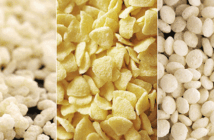
The collection and analysis of digital data from social media for “sensory-consumer” science has grown rapidly over the last decade, with a “wide range of applications for research studying consumer attitudes, preferences, and sensory responses to food”, according to a recently published review* in the journal Food Research International by food scientists from crown research institute, AgResearch.
“The type of social media material we are talking about here could range from an online review commenting on the taste of a protein bar, to a tweet talking about the carbon footprint of meat,” says AgResearch senior scientist Scott Hutchings.
The AgResearch review looked at the potential of social media research for this purpose, including advantages and disadvantages, and then compared this to more conventional research methods that might include gathering groups of people for consumer testing of a food product in a controlled environment, and providing feedback directly to researchers.
“We found that analysis of social media for this research offers advantages such as scale, accessibility and may present an increased ability to investigate trends over time, as well as easier access to cross-cultural or global insights,” says Dr Hutchings.
“On the flipside, there are disadvantages where it comes to the data from social media, including the significant influence of biases of people posting that are difficult to account for in the science. Often consumers that make up a social media data set are not representative of the general population or target market (for example age, gender, personality biases are common), and in most cases we have no demographic information on who the consumers are in our social media data set. While participant biases can also impact on conventional research methods, they can be more easily overcome when working with those methods.”
“Then there is also the issue of the overall precision of the data from social media being generally inferior to that other research methods.”
Social media data that is collected is taken from publicly shared material on sites where the terms of service grant permissions to collect data, Hutchings points out.
Research into the consumer attitudes, preferences and sensory (related to senses like taste and smell) responses to food is important as it can help food producers respond and adapt to changing trends and expectations, and in turn to support the productivity and profitability of food producing nations like New Zealand.
“Clearly what people want from food, or expect from their eating experiences, will vary greatly and changes over time. By growing our insights, we can get access to more rapid, dynamic, and cost-effective information on what attributes – such as the sensory experience and how the food is produced – that consumers want to see in their food,” Hutchings says.




























































































